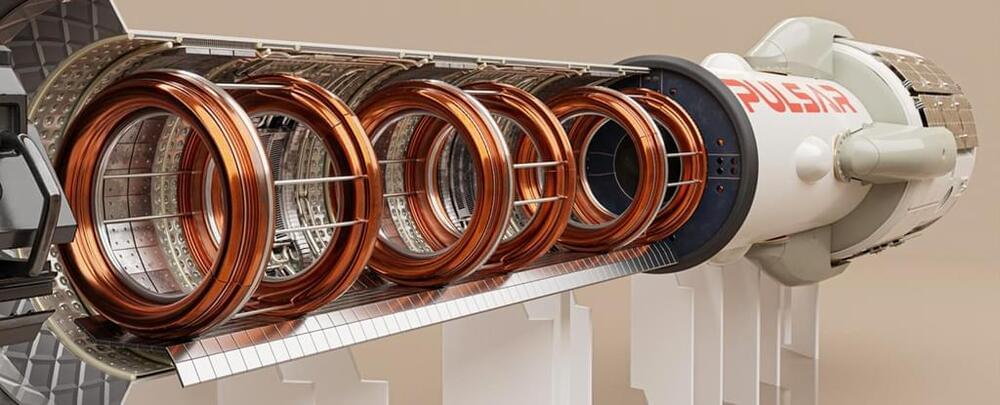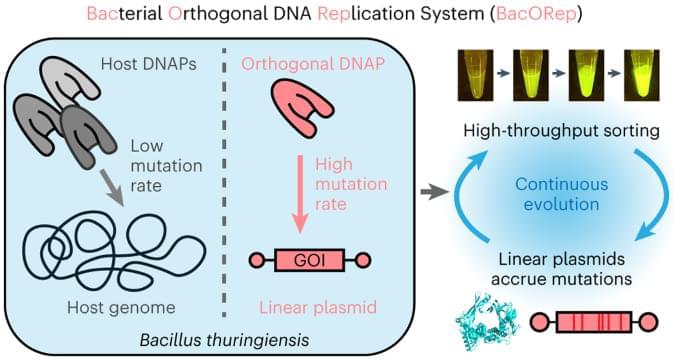The machines are coming much sooner than we thought.



Nuclear fusion propulsion technology has the potential to revolutionize space travel in terms of both speeds and fuel usage. The same kinds of reactions that power the Sun could halve travel times to Mars, or make a journey to Saturn and its moons take just two years rather than eight.
It’s incredibly exciting, but not everyone is convinced this is going to work: the tech needs ultra-high temperatures and pressures to function.
To help prove the viability of the technology, the largest ever fusion rocket engine is now being built by Pulsar Fusion in Bletchley, in the UK.

A recent work introduces a cellular deconvolution method, MeDuSA, of estimating cell-state abundance along a one-dimensional trajectory from bulk RNA-seq data with fine resolution and high accuracy, enabling the characterization of cell-state transition in various biological processes.
Single-cell transcriptomic techniques continue to revolutionize the resolution of cell analysis, determining discrete cell types and cell states with continuous dynamic transitions that can be related to development and disease progression5. Cells in different states can be computationally ordered according to a pseudo-time series, or cell trajectory6. Both MeDuSA and another method, Cell Population Mapping (CPM)7, were developed to exploit the rich spectrum of single-cell reference profiles to estimate cell-state abundance in bulk RNA-seq data, which enables fine-resolution cellular deconvolution (Fig. 1b). Although CPM effectively tackles the issue of estimating the abundance of cells in different states, MeDuSA further improves the estimation accuracy by employing a LMM (see the equation in Fig. 1c) that takes into account both the cell state of interest (focal state) and the remaining cells of the same cell type (non-focal state) as well as the other cell types.

Ah, Doom. Who knows where we’d be today if it weren’t for the innovation that made you the granddaddy of first-person shooters? Probably one of the things that’s helping to keep id Software’s iconic game alive after all these years is the fact that it can be ported to just about anything. It’s even possible to play Doom inside Doom itself.
As you can imagine, many people have attempted to see what crazy methods they can to play this legendary FPS. Now, some scientists are doing something a little different. Namely, they want to see if it’s possible to grow their own neurons that can be taught to play games. And yes, they want to see if they will be able to control Doom.
A video from the YouTube channel The Thought Emporium goes into detail about the hypothesis. The basic idea is to be able to hook up some lab-grown rat neurons to a computer that will be able to play Doom, at least in a rudimentary fashion.


The minuscule fluctuations of seemingly empty space can be controlled just enough to make the building blocks of a new type of computer.

Fedorenko didn’t know it at the time, but those first studies would set in motion a whirlwind that would alter the course of her research. Her team’s findings would ignite media attention, prompting even more people to send along their brain scans. What started as a single case study has now snowballed into the Interesting Brains Project.
By the end of this fall, the project will likely have scanned more than 40 people with atypical brains. In many cases, participants are missing entire brain regions, and like Elyse, they didn’t find out until they were adults.
That may be a tribute to the brain’s flexibility — its ability to change and adapt — including its redundancies, Fedorenko says. Like backup generators, some brain areas can kick into gear if others get injured. A close look at cases like Elyse’s could help scientists better understand how our brains cope with damage and why some kinds are worse than others.

To show the capability of the OrganoidChip in enabling higher-resolution imaging, we used confocal microscopy for several organoids immobilized on the chip. Representative images show improved optical segmentation and the ability to resolve single cells within an organoid (Fig. 4 d). The co-localized EthD-1-and Hoechst-stained nuclei are resolvable and can potentially be used to increase the accuracy of viability measurements. Future implementation of 3D-segmentation using AI-assisted algorithms in the analysis pipeline can provide more accurate estimations of cellular viability in larger screens.
Next, we measured the effect of DOX treatment on the beating kinetics of cardiac organoids. To do this, we relied on calcium fluorescence imaging, as it has been shown to be a good approximation of the cardiomyocytes’ action potentials32. Calcium imaging proved beneficial for beating and contraction parameters since smaller beating portions cannot necessarily be detected from brightfield images, particularly when organoids have been compromised as a result of drug treatment.
When assessing drug effects, we observed some degree of variability in the spontaneous contractile behaviour and beating kinetics between cardiac organoids. Such variability often skews any averaged parameter value across organoids and does not reflect the effect of the treatment conditions on organoid health. To address this challenge, we tracked each individual organoid’s beating off-and on-chip. The drug-induced functionality results are therefore reported as averages of fractional changes of each individual organoid’s beating kinetics parameters, measured at 48 h post-treatment, on both the chamber slide and on the chip, relative to its pre-treatment value (Eq. 3).

An international team of researchers, including members from the Kavli Institute for the Physics and Mathematics of the Universe (Kavli IPMU), has succeeded in a proof-of-principle experiment to verify strong-field quantum electrodynamics within exotic atoms, according to a recent study published in Physical Review Letters.
Physical Review Letters (PRL) is a peer-reviewed scientific journal published by the American Physical Society. It is one of the most prestigious and influential journals in physics, with a high impact factor and a reputation for publishing groundbreaking research in all areas of physics, from particle physics to condensed matter physics and beyond. PRL is known for its rigorous standards and short article format, with a maximum length of four pages, making it an important venue for rapid communication of new findings and ideas in the physics community.

A trio of astrophysicists, two from Colgate University and the third from the University of Texas, has found evidence of dark stars courtesy of data from the James Webb Space Telescope. In their study, reported in Proceedings of the National Academy of Sciences, Cosmin Ilie, Jillian Paulin and Katherine Freese, analyzed three galaxies spotted by the JWST and how they might relate to dark stars.
Back in 2007, Freese, along with Douglas Spolyar and Paolo Gondolo, proposed the idea of a dark star —rather than nuclear fusion, these theorized dark stars are powered by dark matter. Since that time, researchers have continued to study the idea of such a star, built models to show what they might look like and derived a list of characteristics that such a star might have. In the current study, Ilie, Paulin and Freese have found three candidates in Webb data that fit the bill.
Dark stars, the team suggests, likely could have been born during the early days of the universe—like other stars, they would have been made mostly of helium and hydrogen. But they would also contain dark matter—enough to provide a heat source. Such stars would not then be lit by nuclear fusion. If such stars did exist, they would be much larger than other types of stars that have been observed—so large that they might look like galaxies from Earth-based telescopes.